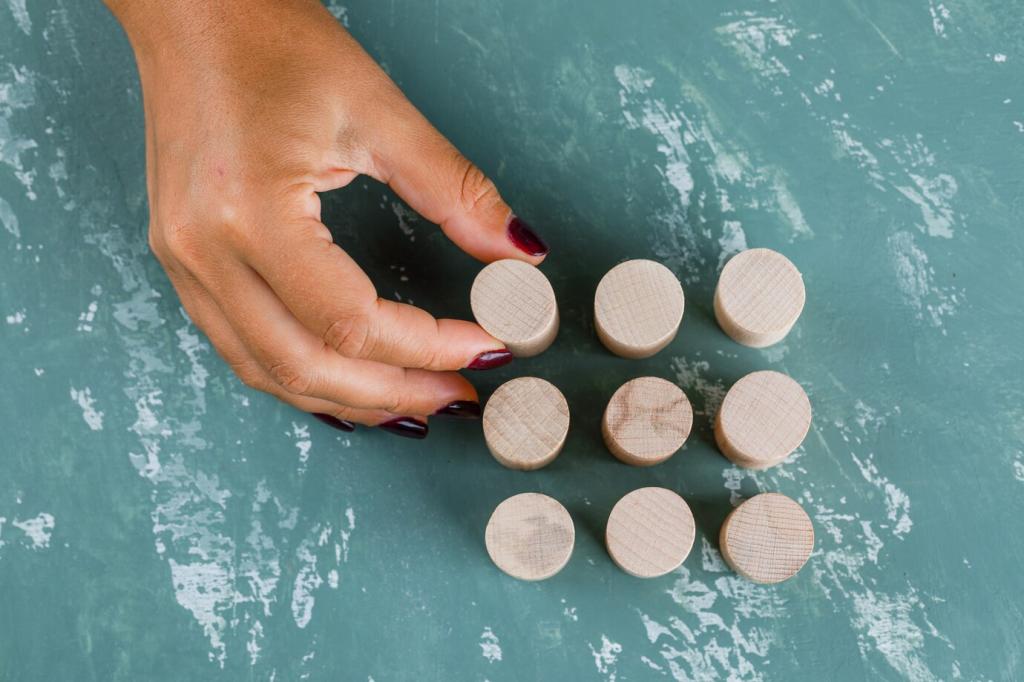Preservation Techniques for Antique Furniture
Preserving antique furniture is both an art and a science, blending traditional wisdom with modern know-how. Such preservation seeks to extend the life and beauty of cherished pieces, preventing damage and valuing heritage. Whether you are a passionate collector, a professional conservator, or an heir to treasured family heirlooms, understanding the proper preservation techniques is essential. This guide explores key aspects of protecting antique furniture, from controlling the environment where furniture is kept to cleaning methods, repair, and displaying techniques. Each section provides valuable insights to help ensure your antiques remain in excellent condition for generations to come.

Temperature Regulation
Maintaining a stable temperature is essential for preserving antique furniture. Fluctuations in temperature cause wood and other organic materials to expand and contract, which may result in warping, cracking, or loosening of joints. Ideally, antique furniture should be kept in spaces where temperatures remain constant, avoiding extremes of cold or heat. This control helps maintain the physical integrity of delicate veneers and intricate gestures, while increasing overall preservation success. Regularly monitoring the temperature and using climate control systems when necessary ensures these valuable objects are not subjected to harmful conditions.
Humidity Control
Humidity is a major concern for antique furniture, as excessive moisture or dryness can create a host of problems. High humidity can cause swelling, mold, and corrosion of metal fixtures, while low humidity can lead to drying, shrinkage, or splitting of wood. Striving for a balanced relative humidity—ideally between 40% and 60%—helps minimize these risks. Using dehumidifiers, humidifiers, or silica gel packets as needed, and avoiding storage in basements or attics, can greatly help. Such careful humidity management is crucial for preventing both rapid and long-term damage to delicate antique items.
Cleaning and Dusting Methods
Choosing Appropriate Materials
The selection of cleaning materials is fundamental for safe maintenance. Harsh chemicals, abrasive tools, or unsuitable cleaning products can strip finishes, scratch surfaces, or leave behind residues. Using clean, soft, lint-free cloths—such as cotton or microfiber—helps lift dust without causing abrasions. For cleaning, select pH-neutral solutions or those specifically formulated for antique wood or fabric, always doing a spot test first. By choosing gentle and appropriate materials, you safeguard the integrity of the surface and prevent irreversible harm from aggressive agents.
Gentle Dusting Practices
Dusting is one of the simplest yet most important preservation tasks. Dust can act as a mild abrasive and, over time, attract moisture or insects. Gently lifting dust with a soft cloth or brush, rather than rubbing or scrubbing, helps protect surfaces. Dust along the grain of wood, paying special attention to carvings and joins where dust collects. Avoid feather dusters, which may scratch surfaces or dislodge fragile details. Consistency in gentle dusting ensures the gradual accumulation of harmful particles is kept at bay without wearing down finishes or delicate ornamentation.
Periodic Deep Cleaning
Deep cleaning should be performed more sparingly than routine dusting and always with utmost caution. This process involves using mild soap solutions to remove accumulated grime or old wax, taking care not to saturate wood or fabrics. It is best to work in small sections, gently wiping away residues and promptly drying surfaces to prevent water damage. Specialized cleaning can also include reconditioning leather or upholstery with approved conditioners. When in doubt, consulting a conservation specialist is wise, especially for complex or rare finishes. A periodic deep clean, properly executed, rejuvenates appearance while retaining historical value.
Repair and Restoration Approaches
Assessing Damage Carefully
A careful assessment precedes any repair or restoration. Identifying the type and extent of damage—whether structural, cosmetic, or caused by pests—helps determine appropriate interventions. Rushing into repairs without full understanding can result in unnecessary loss of original material or value. Look for loose joints, missing veneer, splits, or finishes that have deteriorated, and document these conditions. A skilled eye can often distinguish between patina worth preserving and damage needing attention, ensuring that valuable traces of age and use are not inadvertently erased during repair efforts.
Prioritizing Reversible Methods
In the world of conservation, reversibility is a guiding principle. Using adhesives, finishes, or repair techniques that can be undone in the future protects original materials and allows for updated restoration as technology advances. Modern conservation-grade glues, fillers, and retouching materials are designed with this in mind. When piecing together broken parts or filling gaps, conservators avoid permanent alterations, instead opting for minimally invasive fixes. This philosophy keeps options open for future owners or collectors, who may wish to address restoration differently as practices evolve or more information becomes available.
Matching Original Materials and Techniques
To preserve the authenticity of antique furniture, any repair should match the original craftsmanship as closely as possible. Sourcing similar woods, using traditional joinery, and selecting period-appropriate finishes ensure seamless integration of new with old. This attention to detail helps maintain both structural quality and aesthetic harmony, making repairs almost invisible to the casual observer. Researching or consulting documentation about the piece’s origins and construction methods can guide accurate and respectful restoration. Employing these traditional materials and techniques honors the antique’s original maker and its historical context.

Selecting the correct finish or polish is key to lasting protection. Many antique pieces already have original finishes, such as shellac, wax, or oil, which should be maintained rather than replaced. Using compatible products avoids chemical reactions or unwanted buildup. Commercial furniture polishes often contain silicone or harsh solvents that can cause long-term problems, so choose traditional waxes or oils when possible. By carefully choosing the right products, furniture owners enhance the natural qualities of their antiques and ensure surfaces are both protected and properly preserved for many years.

Proper application of finishes and polishes ensures effective protection without harming the underlying materials. It is important to apply them sparingly, working with the grain and using clean, soft cloths. Excess product can attract dust and moisture, leading to build-up and potential damage. Gentle buffing brings out luster without abrading the surface, and frequent light touch-ups are preferable to heavy, infrequent applications. When dealing with complex surfaces or ornate carvings, patience and delicacy are essential for even coverage. Mastering these techniques helps maintain both protection and the natural, attractive sheen that distinguishes well-cared-for antiques.

Patina—the distinctive surface appearance created by time and use—is highly prized in antique furniture. Overzealous polishing or refinishing can strip away this unique character, diminishing both historical and often financial value. The goal should be to clean and protect, rather than to make an item look new. Lightly waxing or oiling surfaces preserves existing patina while providing necessary protection. If restoration is needed, it should aim to stabilize rather than alter appearance, allowing the authentic story of the furniture to remain visible. Safeguarding patina ensures that each piece retains its unique history and charm.

Pest Prevention and Control
Early detection of pests can save antique furniture from severe damage. Wood-boring beetles, termites, and even fabric pests leave distinct signs such as tiny exit holes, powdery frass, droppings, or webbing. Being vigilant about inspecting both visible and hidden surfaces—inside joints, drawers, or under upholstery—helps catch infestations early. Noticing unusual dust, weakened wood, or odd smells signals that action is needed. Recognizing these signs and reacting promptly prevents minor infestations from escalating into irreversible destruction, maintaining both structural and visual integrity.
Handling and Moving Antiques Safely
Before any move, thorough planning is essential. Assess the furniture’s size, weight, fragility, and construction to determine the safest approach. Clear the route, removing obstacles to prevent sudden jolts or knocks. When possible, disassemble parts like drawers, shelves, or legs that are designed to be removed, and wrap delicate areas for added protection. Preparing in this manner reduces the risk of accidental impacts, allows for controlled maneuvering, and gives ample time to handle surprises. Planning and preparing in advance lays the groundwork for a safe and stress-free move.

Documentation and Provenance Preservation
Recording Restoration Work
Every repair, restoration, or intervention should be thoroughly recorded, describing the materials used, techniques applied, and reasons for the work. Photographic records before, during, and after restoration are invaluable, offering a visual history of each stage. This transparency supports future restoration efforts, making it easier to assess changes and to follow up with appropriate materials. Recording such histories is not only a best practice from a conservation standpoint but also provides reassurance to future owners, collectors, or museums about the authenticity and care of the piece.
Gathering Historical Information
Provenance—the record of ownership, location, and events—is central to the appreciation and value of antiques. Collecting documentation such as bills of sale, photographs, journals, or previous appraisals helps build a detailed history of each piece. If little is known, research using archives, interviews with previous owners, or consultation with experts can uncover fascinating details. Authenticating pieces through their provenance enhances their cultural and financial worth, adding to the compelling stories they carry. Preserving provenance guarantees that these stories can be cherished and shared for generations to come.
Safe Storage of Documentation
Just as the furniture itself must be properly preserved, so too should the records associated with it. Store documentation in archival-quality folders or files, kept in environments free of excessive heat, moisture, and light. Digital copies, created with high-resolution scanning, provide backup and facilitate easy sharing with experts or potential buyers. Labeling and organizing these records ensures they are readily accessible and won’t be lost over time. A systematic approach to recordkeeping protects this vital information against loss, fire, or decay, safeguarding the story behind every precious piece.
Join our mailing list
